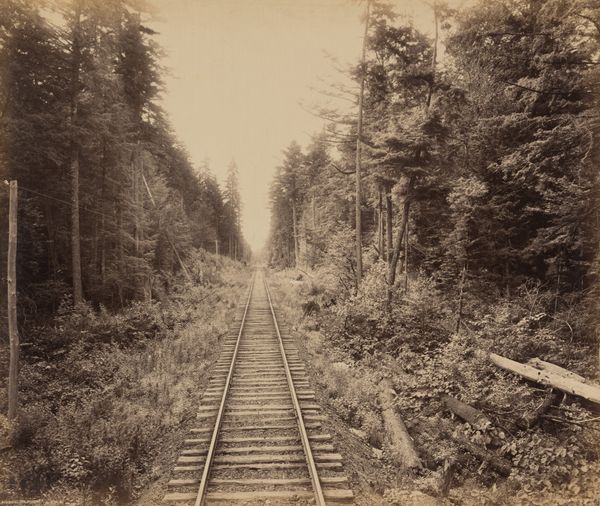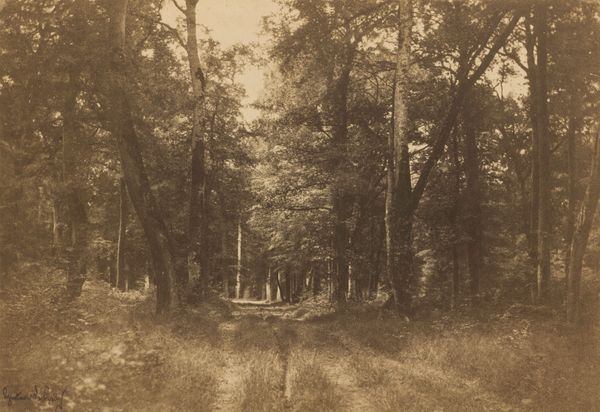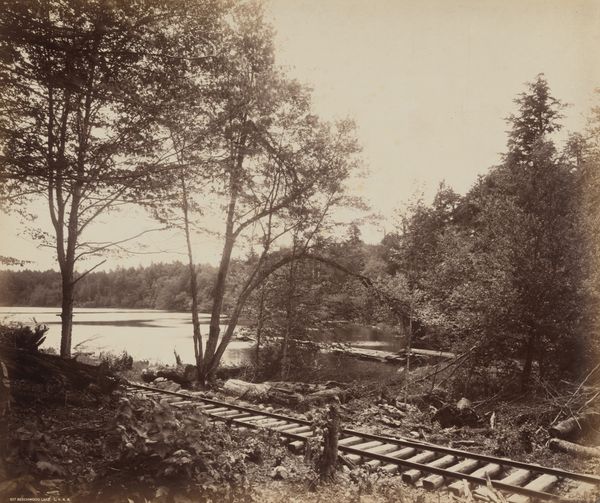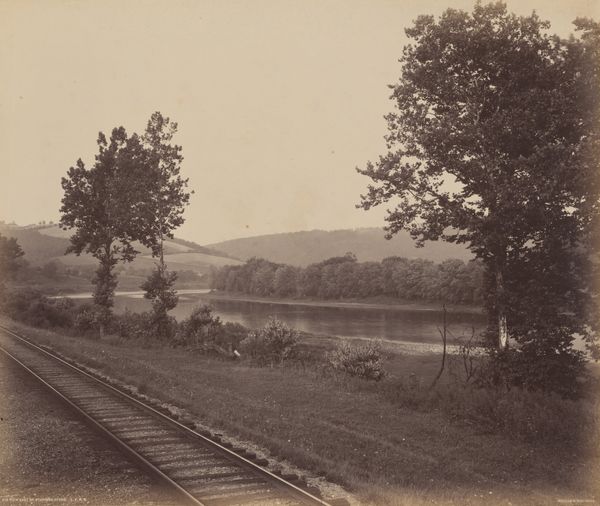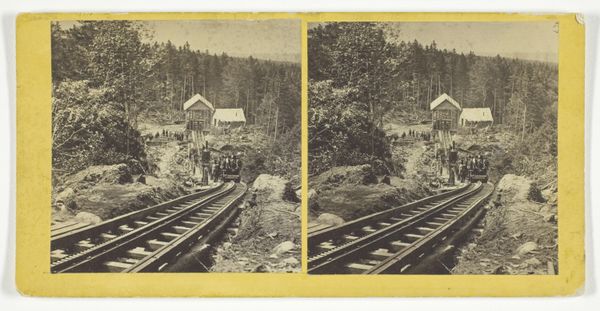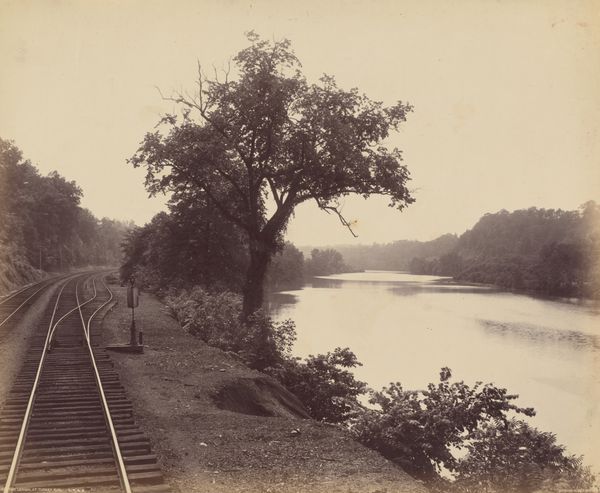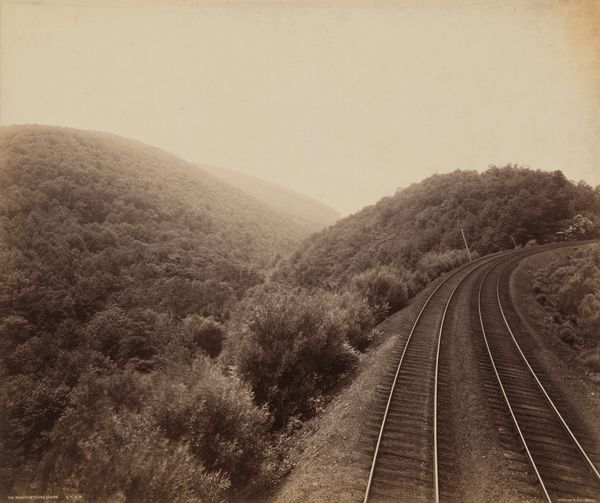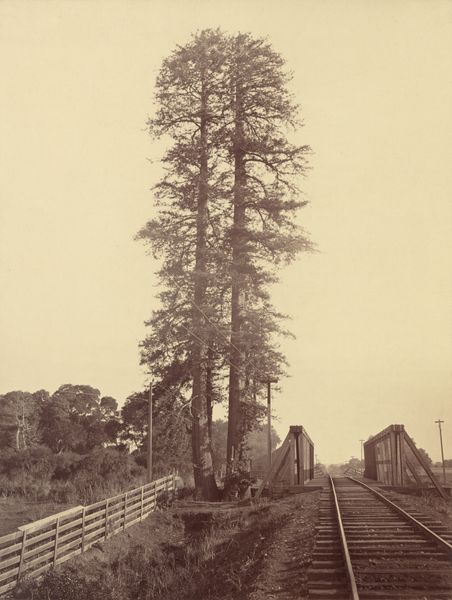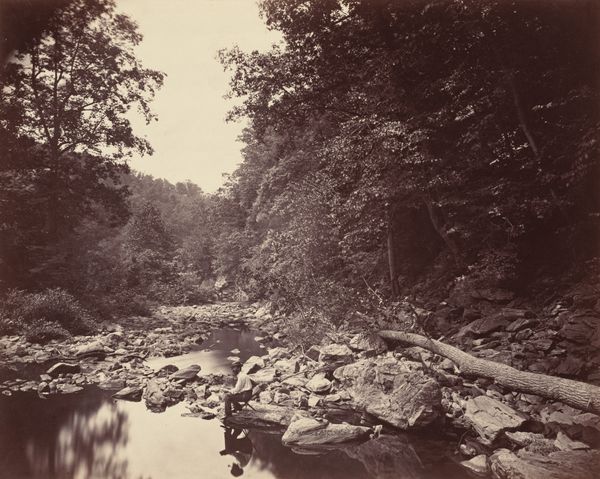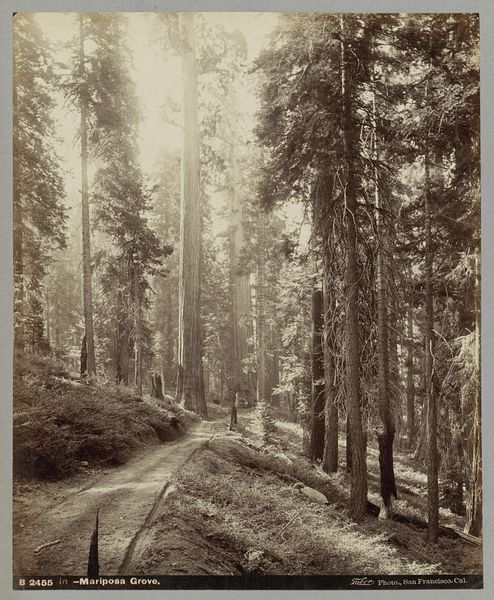
Dimensions: image: 43.6 × 52 cm (17 3/16 × 20 1/2 in.) mount: 50 × 59 cm (19 11/16 × 23 1/4 in.)
Copyright: National Gallery of Art: CC0 1.0
This photograph, "Ganoga Lake Branch," was created by William H. Rau using a printing out paper process, likely albumen. Look closely at the sepia tones and the sharpness of detail, hallmarks of this technique. But consider the scene itself: a railway cutting through a forest. This was a period of intense industrial expansion, with railways like these built to extract resources and connect distant places. The act of photographing was itself an industrial process. The wet plate collodion process was labor-intensive, demanding technical skill and specialized knowledge of chemistry. The glass plate negative had to be prepared, exposed, and developed on site, within a narrow window of time. Rau’s image is a beautiful study of light and shadow, but it also bears witness to the transformative power of industry, and the labor that made it all possible. It reminds us that even the most seemingly straightforward image has a complex story to tell about materials, making, and the world around us.
Comments
No comments
Be the first to comment and join the conversation on the ultimate creative platform.

